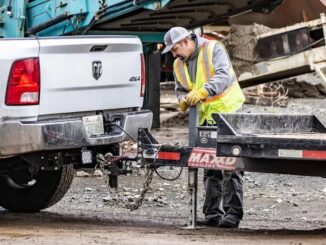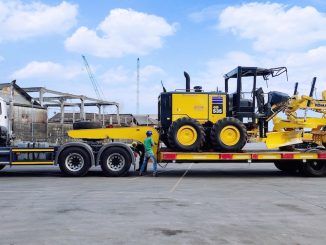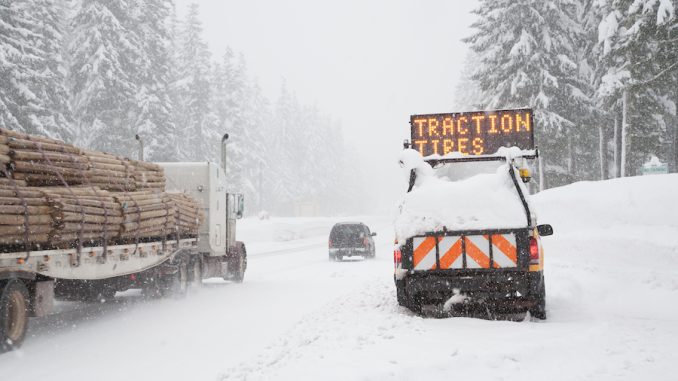
View the complete article here.
When the mercury drops and extreme conditions loom, truck operators and contractors face a suite of challenges that can impede productivity and jeopardize safety. Understanding these risks is crucial for preparing different categories of trucks to navigate winter’s unpredictability reliably.
Common Challenges and Hazards
The grip of tires on icy surfaces diminishes, increasing the risk of skidding. For trucks, which require greater stopping distances, this can turn into a dire safety hazard.
Snow, sleet, and fog can drastically reduce visibility. The larger the vehicle, the more imperative it is that drivers have a clear line of sight—low visibility can lead to delayed reaction times and accidents.
Cold temperatures can lead to thickened fluids and reduced battery capacity, while salt and sand used to treat roads can corrode metal parts and wiring—leading to increased mechanical failures.
Impact on Different Categories of Trucks
Light utility vehicles: Vehicles like pickups may lack the weight to maintain traction on icy roads. Moreover, their utility spaces—if not properly managed—can gather snow, throwing off weight distribution and complicating handling.
Material transporters: Dump trucks and other transporters that carry heavy loads must ensure their hydraulic systems are protected from freezing. The distribution of their cargo can also affect stability on icy roads, necessitating careful management.
Specialized heavy equipment: Trucks with specialized equipment, such as cranes or concrete mixers, may face additional risks as their operational components can be sensitive to freezing temperatures and require special attention to maintain functionality.
Over-the-road haulers: These trucks have to be prepared for long trips in variable conditions. Ensuring that these vehicles are equipped with winter-rated tires and that their engines are maintained for the cold ensures they can withstand long exposures to winter conditions.
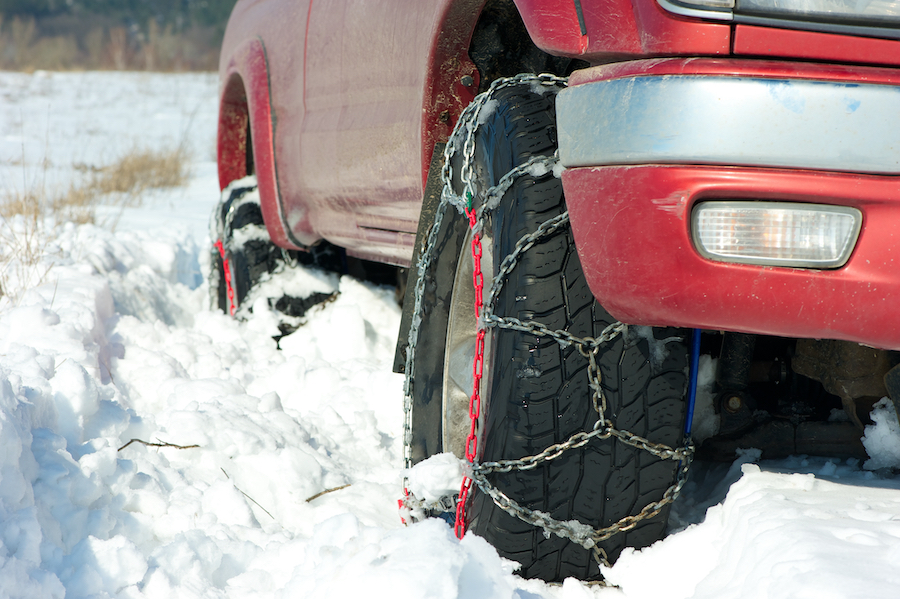
Preparation Strategies for Pickup Trucks and Light Utility Vehicles
Light utility vehicles, such as pickup trucks, are integral to construction and trade work. They’re nimble, versatile, and can navigate through various terrains. However, when winter sets in, these vehicles require specific strategies to ensure they remain reliable and safe.
Winterizing Tips for Pickup Trucks and Light Utility Vehicles
Equip your vehicles with winter tires that have deeper treads for better grip on icy roads. Monitor tire pressure regularly as it can decrease in colder temperatures.
Cold weather can drain a battery’s strength. Test the battery, replace it if necessary, and keep jumper cables on hand.
Ensure that antifreeze is at the correct concentration to prevent freezing of the radiator and engine fluids.
Switch to a lower viscosity oil if recommended by the vehicle manufacturer, as it flows easier in cold conditions.
Bed and Cargo Management in Challenging Weather Conditions
Place sandbags in the bed over the rear axle to increase weight and improve traction.
Use weather-resistant tarps and secure strapping to protect your cargo from the elements.
Clear out snow accumulation in the truck bed to prevent unbalanced weight distribution that can affect handling.
Safety Equipment and Emergency Kit Essentials
Stock your truck with an emergency kit that includes blankets, a flashlight, a first-aid kit, a window scraper, and a shovel.
Keep reflective triangles or flares to mark your vehicle in case of a roadside stop.
Ensure that a charged cell phone or two-way radio is present for emergency communication.
Have additional winter gear such as gloves, hats, and extra layers available in case you need to step out in the cold.
Keep the fuel tank at least half full to prevent fuel line freeze-up and to ensure that you have enough gas in an emergency.
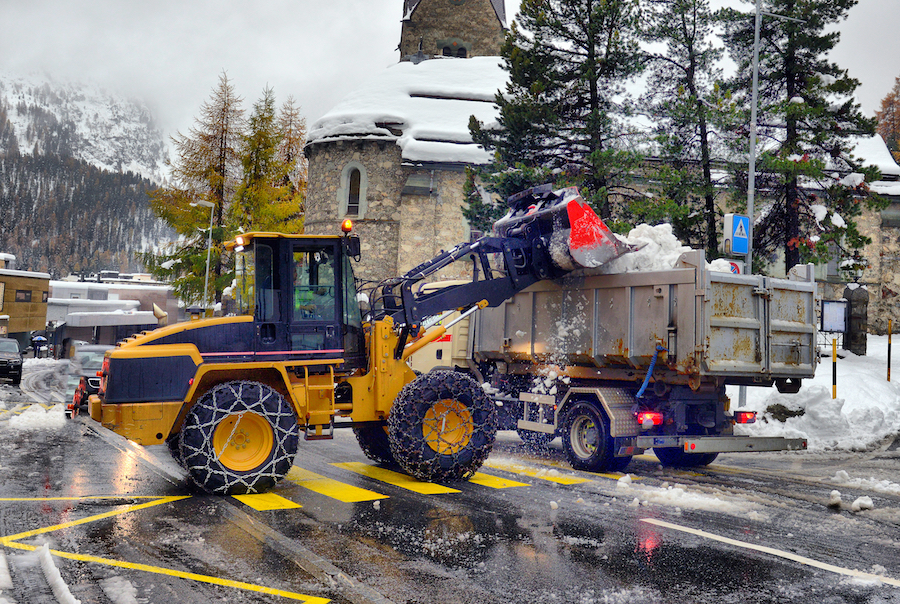
Material Transporters: Winter Readiness
Material transporters such as dump trucks require rigorous preparation to handle the onslaught of winter weather. Ensuring these vehicles are ready for cold weather operations not only maintains the workflow but also secures the safety of the operators and other personnel on the site.
Preparing Dump Trucks and Material Transporters for Cold Weather Operations
Start with a thorough inspection of the engine. Use cold-weather engine oil and fuel additives to prevent diesel fuel gelling.
Cold temperatures can reduce battery power. Check battery life, charge levels, and replace them if necessary.
Inspect tires for adequate tread depth. Consider specialized winter tires or chains for added traction on snow and ice.
Maintenance of Hydraulic Systems and Considerations for Load Distribution
Use a lower viscosity hydraulic fluid that can withstand colder temperatures without thickening and compromising the hydraulic functions.
Inspect and upgrade insulation around hydraulic lines to prevent freezing.
Balance the load correctly to maintain stability on icy or uneven ground. This is crucial for preventing tip-overs when the bed is raised.
Visibility and Traction Solutions for Safe Material Handling
Ensure all lights are operational and clean, improving visibility of the transporter to others and for the operator during loading and unloading.
Check defrosters and interior heaters to keep the cabin windows clear from ice and fog.
Keep traction mats, sand, or gravel on hand to provide additional grip in the event the vehicle becomes stuck.
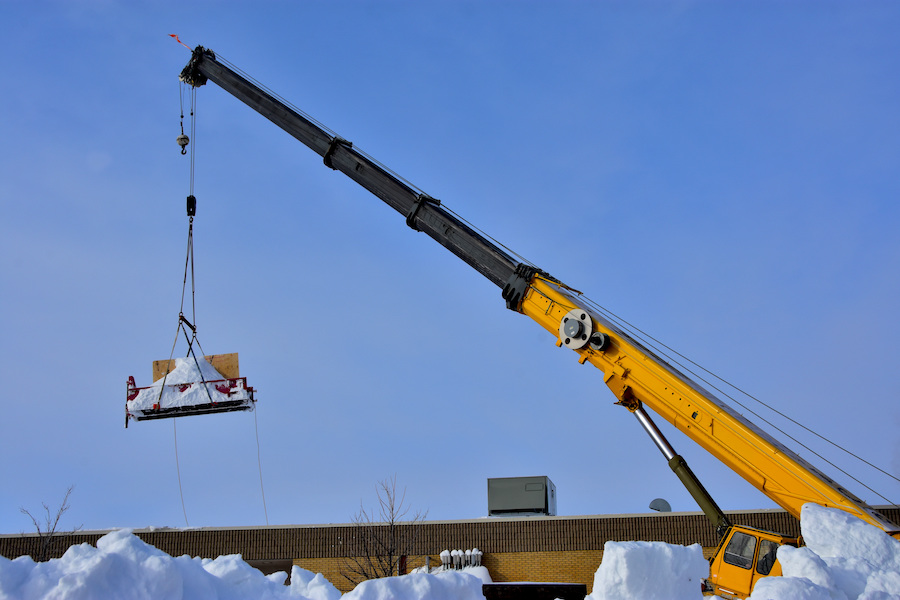
Winterizing Specialized Heavy Equipment
Specialized heavy equipment such as cranes, concrete mixers, and other construction machinery face unique challenges as temperatures drop. These vehicles not only have to navigate the roads like any other truck, but they also need to operate complex machinery in harsh weather conditions.
Unique Considerations for Vehicles with Specialized Functions
Many specialized vehicles have exposed operational components that are sensitive to freezing temperatures. Protect these with appropriate covers and use antifreeze-rated lubricants.
For concrete mixers, ensure that the water systems are drained after each use to prevent freezing—and check that the mixer drums are clean and free of residual concrete.
Ensure that any hydraulic lifting equipment is using the correct fluid that won’t gel in the cold, and routinely check for any ice build-up that could impede mechanical function.
Addressing the Vulnerabilities of Complex Machinery in Cold Temperatures
Cold weather can lead to brittle wires and slow electrical currents. Check all wiring and electrical systems for signs of wear and ensure that they are adequately insulated.
Operator comfort is crucial for safety and precision. Verify that the heating systems in cabs are fully operational.
Develop and disseminate modified start-up and operational procedures for cold weather to all operators to minimize the stress on machinery.
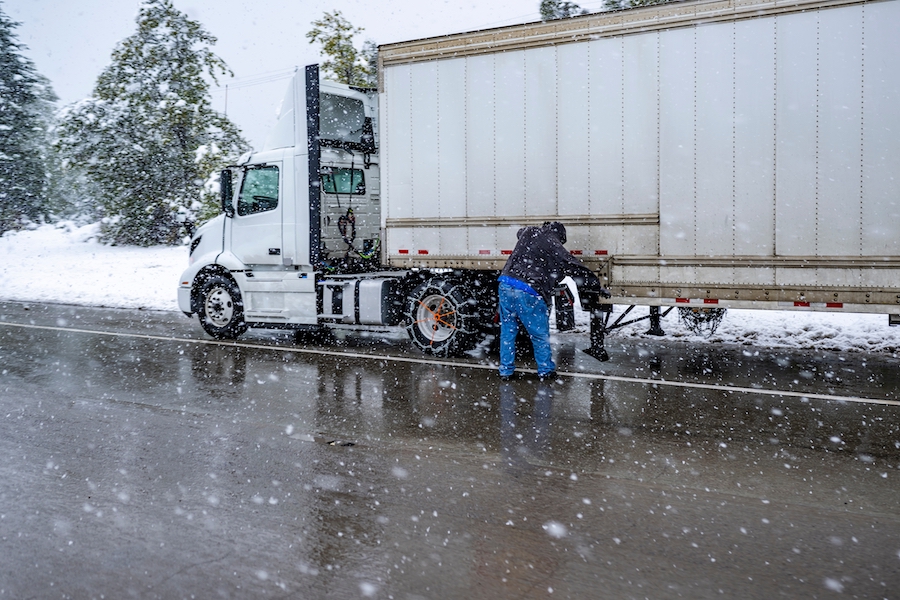
Ensuring Over-the-Road Haulers Are Winter-Proof
Over-the-road haulers must be meticulously prepped to withstand the rigors of winter.
Long-Distance Hauler Preparations, from Engine Care to Cabin Comfort
Regular maintenance checks are vital. Using the right grade of oil for cold temperatures, ensuring fuel systems are treated with anti-gelling agents, and batteries are winter-ready are critical measures.
Driver comfort is crucial over long distances. Efficient heating systems and proper insulation will prevent the cab from becoming a refrigerator on wheels.
Proper ventilation is essential to prevent condensation and ensure a clear view.
Importance of Tire Selection and Maintenance for Extended Road Conditions
Inspect tire tread depth for optimal traction and maintain the correct pressure, as it tends to drop in colder temperatures.
Carry quality spare tires and the tools required for a change, as breakdown services may be delayed in bad weather.
In regions where snow and ice are common, tire chains may not just be necessary—they’re often legally required.
Strategies for Maintaining Operational Efficiency during Long Hauls in Severe Weather
Incorporate real-time weather updates into route planning to avoid the worst of winter storms.
Ensure drivers are trained to handle the truck in winter conditions, including how to install tire chains and recognize the signs of hypothermia and frostbite.
Equip trucks with winter emergency kits—including items like blankets, extra food and water, a first-aid kit, and tools.
Schedule regular breaks to check on the vehicle’s condition—with a focus on tires, lights, and brakes.
Safety Protocols for Workers and Operators
The winter months can introduce a brutal element to the already hazardous work of trucking in the construction and trades industry. It’s not just about vehicle preparation—it’s also about ensuring that workers and operators are equipped with the knowledge and tools they need to navigate these challenges safely.
Training and Procedures for Safe Operation in Winter and Extreme Conditions
Workers and operators should be trained in winter driving techniques—including handling skids, managing reduced traction, and understanding the limits of their vehicles in snow and ice conditions.
Training should also cover how to adjust operation practices for cold weather—such as longer warm-up times for vehicles, the need for increased stopping distances, and the importance of gentle throttle and brake application.
Workers should be made aware of the signs of frostbite and hypothermia, and be trained in first-aid measures to address these conditions. They should also be educated on the proper winter attire for warmth and visibility.
Communication and Emergency Planning Specific to Each Category of Truck
Establish regular check-in protocols to maintain communication with drivers, especially when they are operating in areas known for severe weather.
Ensure that there is a clear plan for each route, with contingencies for weather-related delays and diversions.
Provide a list of emergency contacts and services for different areas, especially in remote locations where services may not be readily available.
Tailor communication and emergency plans to the type of truck. For example, light utility vehicles might require more frequent check-ins due to their lower stability in high winds—while material transporters might need specific instructions for managing load distribution in emergency situations.
Final Thoughts
From the light utility vehicles that zip across icy roads to the heavy-duty haulers that endure the long, frigid nights—each type of truck demands a unique set of preparations. Whatever type of truck you’re operating, consider these final tips for enduring poor weather and other types of extreme conditions:
- Equip with proper tires: Use tires with deep treads suitable for winter for better grip. Regularly check and adjust tire pressure to suit colder temperatures.
- Battery maintenance: Test your truck’s battery, replace it if it’s weak, and keep jumper cables handy.
- Antifreeze is a must: Make sure your truck’s antifreeze is at the right concentration to prevent freezing.
- Opt for low-viscosity oil: In colder weather, lower viscosity oil can help keep the engine running smoothly.
- Balance the load: Properly distribute weight in the vehicle to maintain stability on slippery roads.
- Clear snow from cargo areas: Remove snow from the truck bed or cargo areas to prevent imbalance.
- Safety kit stocking: Carry an emergency kit with essentials like a first-aid kit, blankets, and a flashlight.
- Visibility measures: Ensure all lights are functional, and defrosters are working for maximum visibility.
- Communication tools: Keep communication devices fully charged and ready for use in emergencies.
- Fuel levels: Keep the fuel tank at least half full to prevent fuel lines from freezing.
- Regular checks: Schedule frequent breaks to inspect the truck’s condition, focusing on critical elements like brakes and lights.
View the complete article here.
How can I prepare my pickup truck for winter conditions?
Equip your pickup truck with winter tires, check tire pressure regularly, test the battery, use antifreeze, switch to lower viscosity oil, and manage cargo weight for improved traction.
What are the winterization steps for material transporters like dump trucks?
Inspect the engine, use cold-weather oil and fuel additives, check battery life, ensure tire tread depth, protect hydraulic systems from freezing, and maintain proper load distribution for stability on icy roads.







































